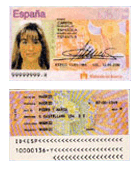Authentication facts for kids
Authentication (say it like "aw-then-ti-kayt") is all about proving that something or someone is real and trustworthy. Think of it as checking if a claim is true. For example, it helps confirm who a person is, where an object came from, or if a computer program or user is allowed to do something. It's like a digital handshake that makes sure you are who you say you are.
Contents
What is Authentication?
Authentication is the process of making sure something is genuine. It's used everywhere, from logging into your favorite game to unlocking your phone. It helps keep your information safe and makes sure only the right people can access certain things. Without authentication, anyone could pretend to be you online or use your devices.
Why is Authentication Important?
Authentication is super important for security. It protects your personal information, like your name, address, and even your money. It also stops unauthorized people from getting into private systems or using things they shouldn't. Imagine if anyone could log into your social media account! Authentication prevents that.
How Does It Work?
Most of the time, authentication works by checking one or more things about you. These are usually:
- Something you know: This is like a password or a secret PIN. Only you should know it.
- Something you have: This could be a key, a special card, or your phone. You need to physically possess it.
- Something you are: This uses your unique body features, like your fingerprint or face. This is called biometrics.
Types of Authentication
There are many ways to authenticate, depending on what's being protected.
Passwords and PINs
These are the most common types of authentication. You create a secret word or number that only you know. When you want to log in, you type it in. If it matches, you're authenticated! It's important to use strong, unique passwords for different accounts.
Multi-Factor Authentication (MFA)
This is a super secure way to authenticate. It uses more than one method from the "something you know," "something you have," or "something you are" categories. For example, you might enter your password (something you know) AND get a code sent to your phone (something you have). This makes it much harder for hackers to get in.
Biometrics
Biometrics uses your unique physical traits to identify you.
- Fingerprint scanning: Many phones and laptops use your fingerprint to unlock them.
- Face recognition: Your phone might scan your face to make sure it's you.
- Voice recognition: Some systems can identify you by the sound of your voice.
Biometrics are convenient because you don't have to remember anything, but they can sometimes be tricked.
Physical Keys and Cards
For physical access, like opening a door, you might use a key or a special access card. These are examples of "something you have." Only people with the correct key or card can get in.
Digital Certificates
On the internet, websites and programs often use digital certificates. These are like digital ID cards that prove a website is real and safe to visit. They help make sure you're connecting to the right place and not a fake website trying to steal your information.
Authentication in Daily Life
You use authentication all the time without even thinking about it!
- Unlocking your phone: Using a PIN, pattern, fingerprint, or face scan.
- Logging into apps or games: Entering your username and password.
- Using an ATM: Inserting your card and typing your PIN.
- Entering a secure building: Swiping an ID card or using a key.
- Shopping online: Logging into your account to make a purchase.
Authentication helps keep your digital and physical world safe and secure. It's a key part of how we trust who we are interacting with, both online and offline.
Images for kids
-
NSA KAL-55B Tactical Authentication System used by the U.S. military during the Vietnam War – National Cryptologic Museum
See also
 In Spanish: Autenticación para niños
In Spanish: Autenticación para niños






